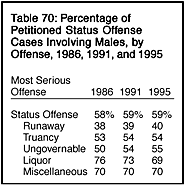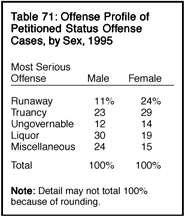|
Sex
The offense profiles of status offense cases for males and females reflect the relatively greater male involvement in liquor law violations and the greater female involvement in runaway cases (table 71). Runaway cases accounted for 24% of status offense cases involving females compared with 11% of cases involving males. In contrast, a liquor law violation was charged in 30% of status offense cases involving males compared with 19% of cases involving female juveniles. The volume of petitioned status offense cases involving females increased 75% between 1986 and 1995, while the volume of cases involving males increased 79% (table 72). Liquor law violation cases increased for females (100%), as did truancy cases for males (81%), between 1986 and 1995. 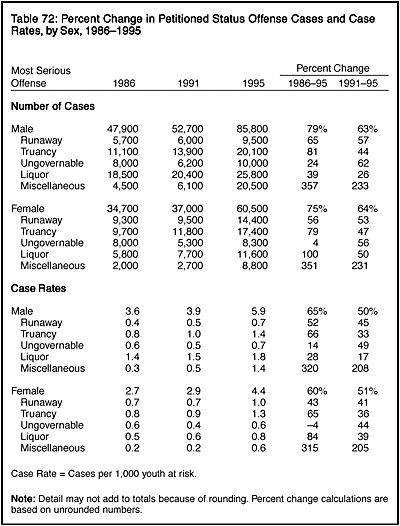 In 1995, juvenile courts handled 5.9 status offense cases involving males for every 1,000 males at risk of referral in the population and 4.4 status offense cases involving females for every 1,000 females at risk of referral. The petitioned status offense case rates for males and females were relatively equal compared with the large differences in delinquency case rates. However, the status offense case rates for males age 16 and older were considerably higher than those for females in the same age groups (figure 19). The status offense case rate for females peaked at age 15 and declined through age 17, whereas the case rate for males increased through age 17. 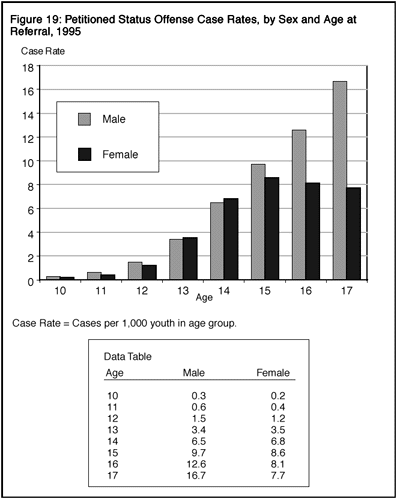 For both truancy and ungovernability cases, the male and female case rates were nearly equal at each age, peaking at age 15 or 16 and declining thereafter (figure 20). By contrast, status liquor case rates were considerably greater for males than for females after age 15. Case rates within the status liquor category increased continuously with age for both males and females, showing large increases in the older age groups. In runaway cases, unlike any of the other status offense categories, the case rate for females was consistently greater than the case rate for males. 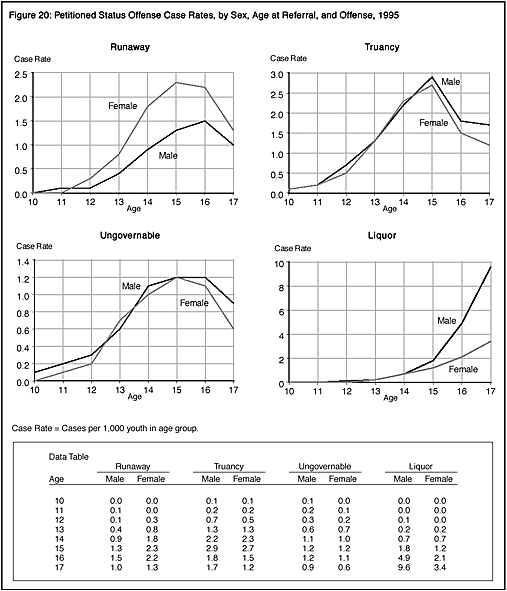
|
